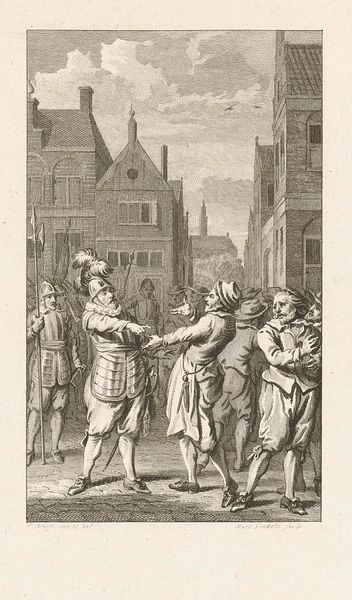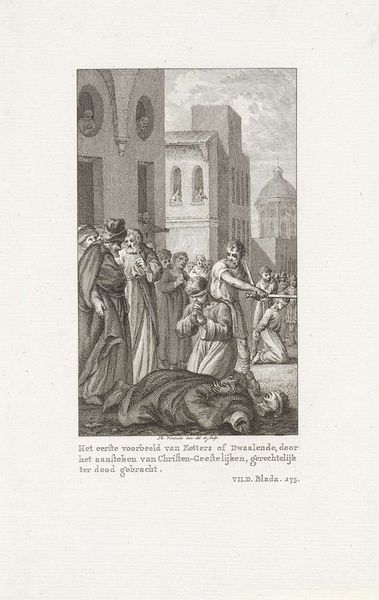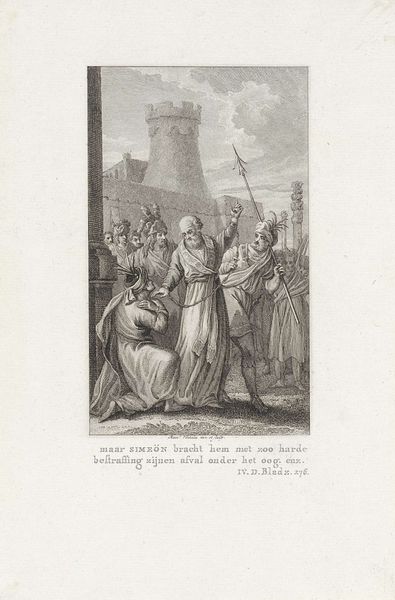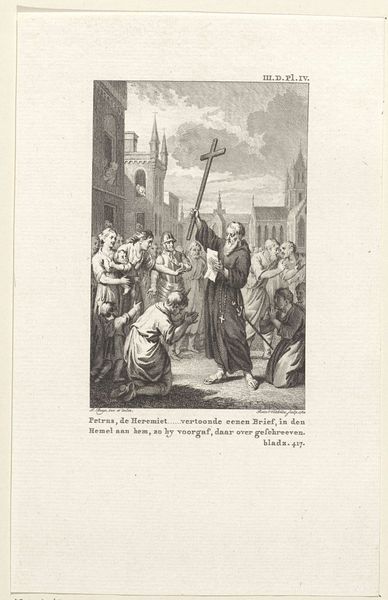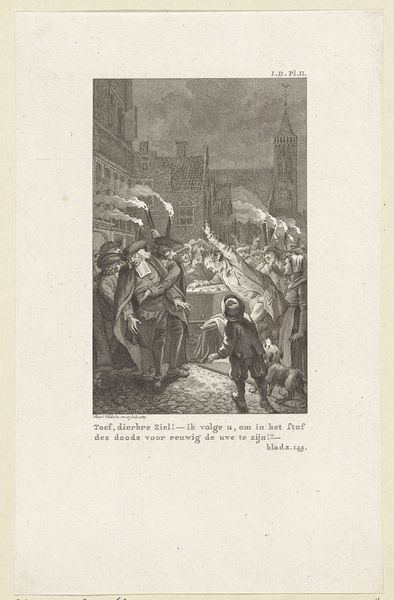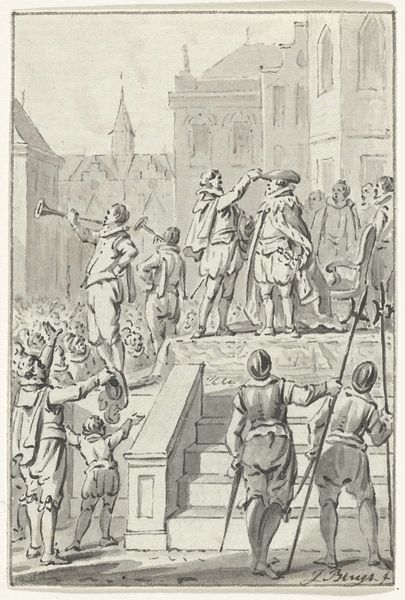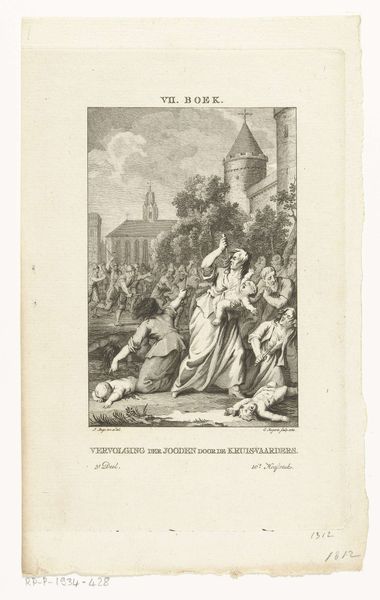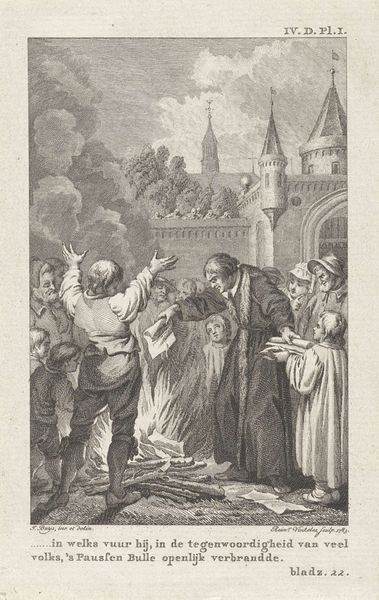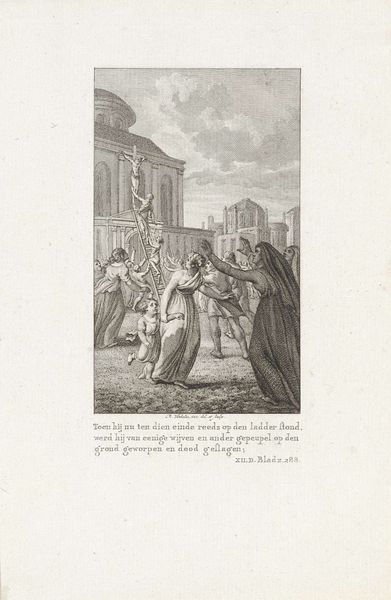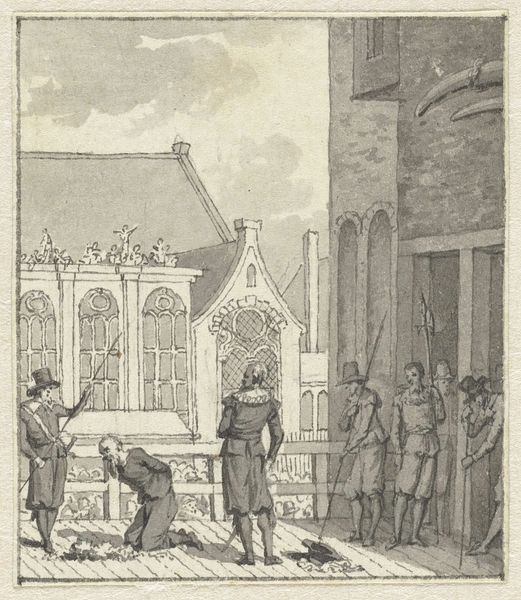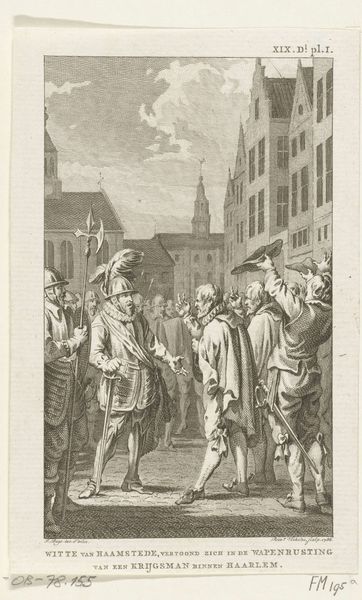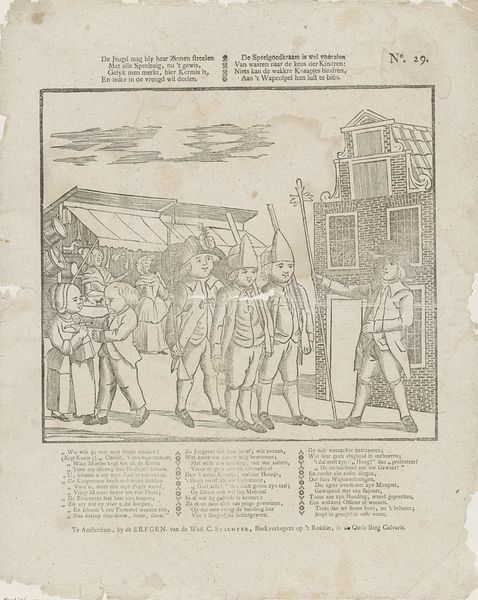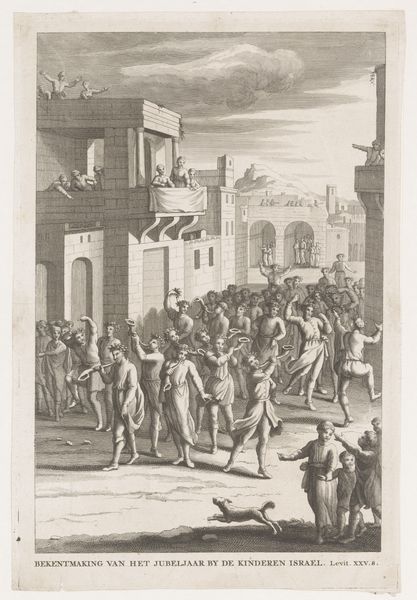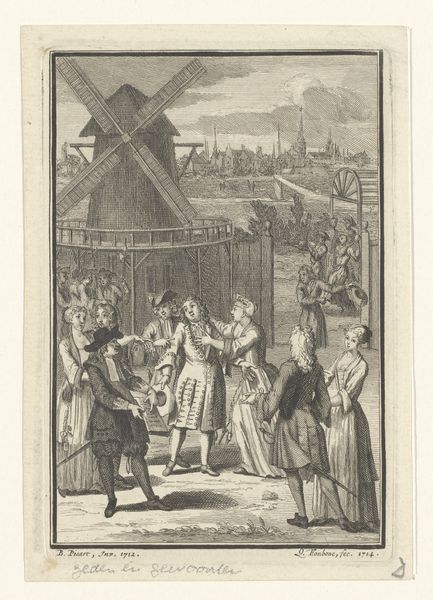
Trijn van Leemput trekt met een groepje vrouwen op naar kasteel Vredenburg om het te slechten, 1577 1780 - 1795
0:00
0:00
print, etching, engraving
#
dutch-golden-age
# print
#
etching
#
history-painting
#
engraving
Dimensions: height 164 mm, width 113 mm
Copyright: Rijks Museum: Open Domain
Curator: Welcome. Let's turn our attention to a fascinating print titled "Trijn van Leemput trekt met een groepje vrouwen op naar kasteel Vredenburg om het te slechten, 1577," an etching and engraving by Reinier Vinkeles, created between 1780 and 1795. It's currently held here at the Rijksmuseum. Editor: Immediately striking. The line work is so crisp, almost documentary in style. You have this small army of women seemingly marching purposefully toward the imposing structure in the background, with a little dog too. Curator: Absolutely. Vinkeles captures a key moment in Dutch history through the lens of this fascinating female figure. Trijn van Leemput was a folk heroine known for her role in demolishing Castle Vredenburg in Utrecht. This print serves as a visual representation of popular resistance against Spanish rule. Editor: I'm particularly drawn to how the artist renders their tools, you know the objects of labor. The brooms and the pickaxes suggest a collective, almost domestic form of rebellion. There’s a challenge to the conventional tools of warfare being leveled here; they become weapons against oppression. Curator: Precisely! This action had enormous symbolic significance. The demolition became a point of collective identity in Utrecht, signifying liberation and local autonomy. The print itself circulates these sentiments, and celebrates female agency within these historic struggles. Editor: Thinking about the time the work was produced – late 18th century – I wonder about the act of translating this historical moment. The print medium would have made it relatively accessible, almost a call to revisit revolutionary action through a specific craft practice. Was it intended as propaganda? Curator: It undoubtedly contributed to a visual rhetoric surrounding Dutch national identity. Remember, the late 18th century was a period of political upheaval and nation-building across Europe, and images like this helped to construct and reinforce narratives of civic virtue, female empowerment, and the fight for independence within the Netherlands. Editor: Fascinating. It's a compelling piece when viewed as a story of material intervention as much as social change; how the people reshaping their physical world reshaped history. Curator: It gives us a glimpse into how powerful moments can galvanize into lasting, meaningful cultural symbols. Editor: Indeed. I am left thinking about what revolution means at street level, in terms of everyday things.
Comments
No comments
Be the first to comment and join the conversation on the ultimate creative platform.
